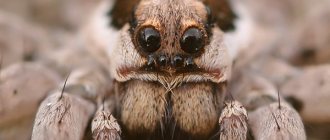History of the species
The history of jungle cats begins when the ancient Egyptians domesticated a subspecies of the cat called Felis chaus. This is a type of African cat, the image of which is preserved on many famous figurines from the times of Ancient Egypt.
The ancient Egyptians domesticated African cats from nearby territories.
These were excellent hunters who brought prey to their masters and replaced dogs as guards. Beginning in the 18th century, attempts began to crossbreed the jungle cat with other representatives of cat breeds in order to breed a pet that could retain a developed hunting instinct combined with an amiable character.
IMPORTANT: Wikipedia indicates that the “reed cat” species was first described by the imperial naturalist Johann Anton Güldenstedt in 1776.
Currently, the wild reed cat lives in more than 20 countries around the world, and the largest representatives of the subspecies have settled in the Caucasus. Reed cats or “swamp lynxes” prefer to live next to people, which often causes discontent among the latter: the wild habits of these animals can deprive the farm of a significant number of small livestock.
The jungle cat, although not ferocious, is still a wild and unpredictable beast
IMPORTANT: the jungle cat is listed in the Red Book of Russia and is protected by law.
The jungle cat is used in breeding, bringing into the world exotic offspring. One of these original breeds is the Chausie - a mixture of the jungle and Abyssinian cat, which was bred and officially registered in 1995.
The photo shows a representative of the Chausie breed
In its pure form, the total number of representatives of the subspecies falls annually, which is associated with continuous deforestation and the death of animals in forest fires, which often burn in the steppe regions of their habitat.
Origin of the breed
Jungle cat or marsh lynx are synonymous names for wild cats. This is a fairly large animal, ranging from 60 to 90 cm in length and weighing from 8 to 12 kg. If you look from the side, you will find that the cat has a short body with long legs. These proportions are necessary for hunting birds in high reeds. The cat's tail is short - from 21 to 30 cm. The color is spotted black-brown or solid brown. There are tassels on the ears.
The species was discovered by traveler Johann Anton Güldenstedt in 1776, when, on the orders of Catherine the Great, he mapped the southern territories of the Russian Empire. Two years later, Johann Christian Schreber included the animal in official documents, gave it its current name and described its appearance in detail.
Important! Jungle cat is the name of a wild breed. It is more correct to call pets a houseie or a chausie.
Quite widely distributed. Found in Western and Minor Asia, Transcaucasia, Central Asia, Hindustan, Indochina and Southwestern China. On Russian territory it can be found on the plains of Dagestan and on the shores of the Caspian Sea and in the lower reaches of the Volga. However, due to hunting and poaching, the jungle cat is now becoming less and less common. The last time it was seen in the wild in Russia was in 1985, back under Soviet rule.
Important! The jungle cat is in the Red Book of Russia. Hunting is prohibited.
Swamp lynxes love to settle in dense reed and reed thickets near rivers, swamps, lakes and seas. These animals are excellent swimmers. Cats rarely go out into open spaces, but sometimes they can be found near their habitats. In the mountains, cats were found at altitudes of no more than 800 meters. More often, the jungle cat leaves its usual habitats in winter and spring, during periods of food shortage.
The mating period begins in February and ends in March. At this time, cats can be heard over long distances due to their loud cry. During this period, males can pose a threat to people, as they are large enough to kill or severely injure an unarmed person. Females carry their cubs for 66 days. In May, from 2 to 5 kittens are born. They become sexually mature after 1.5 years.
Important! It was when the swamp lynx was crossed with Abyssinian cats that a new breed appeared - the Hausie.
A new type of domestic cat was first obtained in 1960 and registered in 1995. The breed has the appearance and strength of a wild ancestor, but at the same time it is docile and able to get along with people, although it has a wayward character. Cats have a large body and ears with tassels. They are very strong, capable of jumping high and hunting. But at the same time, they have a friendly character and love to communicate with people.
Exterior
Houses got their exterior from jungle cats:
- The coat is short . In summer the coat is loose and coarse, in winter it becomes dense and dense.
- The color is black, brown , sometimes slightly silver, usually tecked. Often pets turn out to be multi-colored with brown and black stripes or spots. The coloring greatly depends on what subspecies of the jungle cat is the pet’s ancestor. In southern Asian regions they are brownish-red in color, while in Central Asia and Africa animals with a dirty yellow tint predominate.
- Body . These pets are very large, males weigh up to 15 kg, females - up to 10 kg. The height at the withers is about half a meter. They live long - up to 15 years.
- Head . An important feature is the tufts on the ears, which is why the pets resemble a lynx. Has excellent hearing and night vision. The sense of smell is poorly developed.
- Other characteristics . The tail is of medium length, rather thick. The paws are high, with well-developed muscles, very strong.
Character
jungle cat
Rusty cat
Serval
Behavior, activity and attitude towards people are very different between wild and domestic representatives of the breed.
Wild swamp lynx
In nature, jungle cats are loners who will not tolerate the presence of other representatives of their species. They are wary of people, hiding in high reed thickets. In February-March, they begin to estrus; males and females begin to look for a mate. All this happens with shouting and fighting. Next comes several months of “married” life. After 2 months, the female gives birth to several kittens.
Kittens feed on their mother's milk for up to 3 months. And at 2 months they begin to learn to hunt, so far only in the form of play. By 5 months they are still immature and do not have the size of an adult animal, but are already large and strong enough to leave the parental home. At this time, the family breaks up, and the kittens begin an independent life.
Domestic jungle cat
Domesticated jungle cats, or bred house cats, have a good-natured but capricious character. They are very active and require a lot of space, so they must be allowed outside or even walked with them on a leash. Cats are quite silent, they can only snort and hiss, but if necessary, the pet is able to express its needs with a loud, powerful bass voice.
Cats are quite calm and do not fight with other pets or even dogs. They are very devoted to their owner and need affection and communication with him. However, their patience is sometimes lacking; pets are capable of attacking a person or animal that annoys them. These cats are quite smart and potty train quickly. During the period of sexual hunting they become aggressive and even dangerous.
Important! It is imperative to spend time with the kitten, otherwise it may go wild.
To summarize, home houses have the following character traits:
- Mobility . Cats love to explore the world around them, they are mobile and active. You need to walk with them. Pets quickly learn to hunt and can catch not only mice, but also birds and other small animals.
- Learns quickly . He can be taught to go potty, open and close doors. But at the same time they can be capricious, so although they can be trained, they sometimes show their temper.
- They are sociable , but do not like to be held. Cats are never against playing with members of the household; they often follow their owner, demanding communication and affection.
- Good nature . Despite their wild features and love of hunting, the pets are quite friendly. They often build warm relationships with children and other animals, including dogs. There are even cases where cats lived together with mice and poultry.
- Love for water . They are great at water procedures. At the same time, they swim well and always accompany their owner while swimming in the river.
- Demanding on space . They love to go for walks and need it. The radius of their “personal” territory is 100-200 meters, but they can go further for the purposes of hunting, walking or searching for a partner.
- They are hunting . In urban areas, cats can hunt birds, in rural areas - rats, mice, otters and other small animals. Other cats or small dogs are not usually attacked.
Kittens can be purchased after 3 months, when they stop drinking mother's milk and have completed all childhood vaccinations. However, many recommend buying them at 5 months, then you can not make a mistake with the gender, as well as with the color of the pet. In addition, by this time they should already be accustomed to the potty, scratching post and their place. In addition, kittens can learn hunting and social skills from their mother.
Maintenance and care
These pets are not particularly picky, but some care is needed.
Walks
It is preferable to keep a pet in a country house. In urban environments, he needs to be walked periodically. Of course, this is not a dog, so there is no need to take him out 2 times a day. But it is necessary to walk your Hausa 2-3 times a week. Otherwise, health problems may occur due to lack of mobility and ultraviolet radiation. In particular, cats quickly gain weight and develop problems with their skin and fur.
Combing
It is necessary to comb the fur only during the molting period. The rest of the time, no special care is required. When kept at home, shedding may be delayed. You need to comb your pet with a furminator. When kept at home, you need to wash it as needed; in rural areas, you can clean the cat once a week and treat it for fleas once a month.
In cases where a jungle cat does not allow itself to be combed, you need to use the following tips:
- Brushing a cat's head, back, and between the ears is always a pleasure. Alternate brushing these areas with other areas.
- Try doing this while your cat is sleeping.
- The procedure must be carried out carefully so that the pet does not feel pain.
- If you are worried, combing can be postponed for an hour or two.
- The tangles must be cut out in advance, the strands should be sorted out with your fingers or cut off.
- Before brushing, take your pet for a walk and then feed it. Then the cat will be soft and lazy.
Nail care
You need to equip a scratching post for your cat.
It must meet the following requirements:
- It is sufficiently firmly attached, since the cat will not only sharpen its claws, but also try to play with the device. It is better to fix it with a cross.
- The best option is a log. But a plastic pipe wrapped in ropes will also work.
- The scratching post must not be coated with varnish or other dyes.
- It is advisable to make several scratching posts, but at the same time, so that they have a different texture.
You can train it by lubricating the scratching post with catnip.
The claws should be trimmed according to this pattern:
- Make sure your cat is comfortable.
- Hold his paws firmly.
- Hold the nippers in your right palm, and with your left, press on the pad in the middle so that the claws come out.
- Look at them from the side. Usually the claws are translucent, which is why you can see the pink area - the vascular zone.
- Trim the tip, leaving at least 2 mm from the pink area. The nippers must be strictly perpendicular to the plane of the claw.
- Sharpen the sharp cut edges of the claws with a file.
- If the vessel is damaged, treat the wound with an antiseptic.
The claws can be ground down every few months. To do this, use a nail file, nippers or small scissors. Cotton wool moistened with hydrogen peroxide must be used to treat the claws before and after grinding.
Bathing
House has a positive attitude towards bathing. The procedure can be carried out as the coat becomes dirty or before an exhibition. The water temperature should be optimal – +38…+40oC. You can put cotton wool in your ears to prevent water from getting in there. You need to fill a small basin or bath with water and put a mat on the bottom so that the animal’s feet do not slip. Wet the fur, soap the pet, rinse off the foam. After water treatments, you need to dry your hair with a hairdryer. Finally, the cat should be kept warm for the next 3-4 hours.
Health
Due to crossbreeding with wild animals, Hausas have excellent health. Cats, like all members of the feline family, are predisposed to ICD. However, due to their active lifestyle and large body size, this disease is observed in them much less frequently than in other males of the same species of animals. The typical life expectancy for the cat family is about 15 years.
Cats need to have their vaccinations up to date. Kittens at 3 months are vaccinated against herpesvirus infection, panleukopenia, and calicivirus. Adult animals are vaccinated annually. But before this, deworming must be carried out. Pets are also given anthelmintic drugs every six months for preventive purposes.
Appearance and features
At first glance, the jungle cat is not much different from an ordinary pet, but this is a misconception. The appearance and character of animals have differences that are most clearly determined by the description of the breed.
Cats of this subspecies have many similarities with other felines.
Dimensions and weight of jungle cats
The size and weight of the animal indicate that the jungle cat is somewhat larger than domestic felines. The body length of a jungle cat can reach 50-95 cm, and its weight does not exceed 15 kg.
Anatomical features
This subspecies of felines has a very developed body structure, especially the muscles that are always in good shape, as well as strong and long paws, thanks to which the animal moves deftly across any terrain. They move quickly and gracefully across the surface, jump high and skillfully climb trees.
This type of cat has pronounced yellow or green eyes.
The animal's tail has a black tip, but is not particularly long or thick. The ears are decorated with graceful tassels, and their height, in some cases, can reach eight centimeters.
Color
The animal's coat is short, with a thick undercoat, which has the unique natural property of quickly removing dirt and strong water-repellent ability. In summer, jungle cats “dress up” with shorter fur, and in winter their coats become fluffier. Often the color of the animal is a gray-red camouflage.
The color of the jungle cat helps it camouflage and hunt in natural conditions
Description and origin of the species
The first scientist to catch and describe the jungle cat was the German zoologist Johann Güldenstadt. While on an expedition by order of Catherine II, in 1776 he caught an unusual wild cat on the Terek River, and named it “house”. In 1778, another German zoologist, Johann von Schreber, compiled a scientific description of the new species and gave it the scientific name chaus
). In the 1930s, British zoologist Reginald Innes Pawcock assigned the animal to the genus Felis.
The animal’s closest relatives are other representatives of the Cat genus:
- black-footed cat
- sand cat
- Central European forest cat
- steppe cat
- domestic cat
- Chinese mountain cat
- African wild cat
Features of character and lifestyle
The jungle cat is a wild predator whose habitat has taught it to live and survive in harsh natural conditions. The character of the animal is also formed here, which is inherited by its direct descendants by genotype.
Determination, pride and intelligence, heightened by the survival instinct - all this forms the basis of the jungle cat’s character. Such a pet will not put up with an encroachment on his personal space and will not obediently tolerate an attitude that seems unacceptable to him. The wild nature has forever programmed in these animals a pronounced desire for independence. The jungle cat will defend itself and its territory to the last.
Jungle cats are especially fierce in protecting their offspring.
IMPORTANT: jungle cats can act very domestically; in particular, they meow and purr in exactly the same way as regular domestic cats.
One of the most pronounced traits in the character of the jungle cat is a love of solitude and a nocturnal lifestyle, which is why the cat sleeps a lot during the day and is awake at night. For rest, the animal chooses a warm and safe place for itself, since it does not perceive cold well and is not at all adapted to sub-zero temperatures. Most of the time, jungle cats lurk in dense thickets, where they hide from stronger competitors (wolves, large dogs and leopards).
With the onset of darkness, they go out hunting, skillfully pursue prey in long runs and deft silent attacks, are not afraid of water, are excellent at catching fish and generally have extraordinary hunting skills.
What does a jungle cat look like? Dimensions and weight
The jungle cat is a graceful, long-legged, medium-sized cat. This is the largest representative of the Cat genus that has survived to this day. House cats are noticeably larger in size than domestic cats and have a more refined build.
The length of the animal’s body including the head ranges from 59 to 76 cm. The height of the predator at the withers is approximately 36 cm, weight varies from 2 to 16 kg. The cat's size decreases from west to east, and similarly from north to south. Thus, the smallest Hausas live in Southeast Asia. The difference in size depending on habitat is explained by higher competition among cats in the southeast. Females are usually smaller in size than males.
The cat has a long and narrow muzzle, with white fur near the mouth. The long ears, 4.5 to 8 cm high, are set close together and have small tufts of dark hair at the tips of the ears. The eyes are yellow, with a narrow long pupil, like those of domestic cats.
The tail, 21 to 36 cm long, is marked with 2-3 black rings towards the end and a black tip. The legs are long: in one step the predator covers an average of 29-32 cm. Due to the long legs, tufts on the ears and the relatively short tail, the house looks like a small lynx.
The color of the cat is uniform, without spots, the color of the fur varies from sandy and light yellow to red-brown and gray shades. Black and white jungle cats, that is, albino and melanistic animals, are found mainly in India. In terms of fur color, jungle cats resemble caracals and African wild cats.
Kittens are often born spotted and striped; the pattern may be partially preserved into adulthood. There are 4-5 dark rings on the back of the front legs; they are hardly noticeable from the front. The fur on the belly is usually noticeably lighter than the color on the back and sides; the fur on the throat is quite light. The fur on the back is noticeably thicker than on the underside of the body. Winter fur is noticeably thicker and denser than summer fur.
Is it possible to keep a jungle cat at home?
At first glance, it may seem that such an idea is nonsense and it is impossible to train a wild animal. This is partly true, but still cases of keeping a jungle cat at home exist and are successfully practiced with one condition: the future pet must get used to living together with a person from the first months of life. Otherwise, the training enterprise is doomed to failure and it will be almost impossible to curb the wild nature of the animal.
The jungle cat can become a pet and an exotic decoration for the home, but this will require a lot of time and effort.
Many people, in pursuit of the exotic, forget that some breeds are bred and evolved directly for domestic conditions, but not all types of cats are able to adapt to life in captivity. The jungle cat is one of those closest relatives of cats that was created by nature for a wild habitat. He cautiously and warily welcomes human society, and will perceive any attempts to limit freedom as a threat to his own safety. It is for this reason that jungle cats are purchased as one-month-old kittens, subject to patient and long-term care for the animal. Only in this case is there a real chance of raising a pet that will peacefully and obediently coexist next to a person.
IMPORTANT: we should not forget that surrounded by human care and the best living conditions, the jungle cat forever remains a wild predator.
History of the breed
Felis chaus is an ancient breed that the Egyptians were the first to try to domesticate about 3 thousand years ago. Back then, hunters used the Nile cat to hunt waterfowl. Egyptian scrolls depict swimming animals that bring game to humans. In ancient times, the breed lived in at least 25 countries, but everywhere the animal had a reputation as a dangerous, wild predator, which people tried to avoid.
The beast was a serious problem for the population of the villages, as it hunted pheasants and muskrats. After the onset of cold weather, the predator moved closer to people’s houses and attacked poultry. Hunters caught wild cats to use their skins for farming. The jungle cat is not a domestic animal, but a predator living in the wild. In the 18th century, breeders were able to develop a special breed - the “house”, which is a hybrid of the reed lynx with an ordinary cat.
In the 20th century, sociable, friendly “Houseies” appeared in the United States, which were born by crossing wild jungle cats with short-haired domestic cats. This is how the Jungle Curl, Stone Cougar, and Chausi (Housey) breeds appeared, keeping them at home is safer and more legal. Breeders were able to develop breeds that retained the external beauty, large size and disposition of a wild nocturnal animal, combined with the docility of a domestic pet.
Features of care
The jungle cat is by no means hardened by a “sofa” lifestyle, therefore it has excellent health and physical indicators that are the envy of all domestic cats. The nuances of the conditions of detention include several points:
- Rabies vaccinations are at the top of the list of jungle cat care obligations;
- Walking in the fresh air is an obligatory part of the animal’s lifestyle; the jungle cat gets used to a leash and harness without much persuasion;
The jungle cat needs frequent walks and exercise.
- Keeping such a cat in a cramped environment is a very bad idea: the animal needs space with a variety of games and entertainment;
- It is important to support your pet’s hunting instinct so that it does not get bored and does not begin to show unreasonable aggression: sometimes you can buy a live mouse or fish at a pet store, which the cat will happily hunt;
- Mixed breeds of this type are kept in comfortable enclosures equipped for natural conditions;
- Bathing for such an animal is a true pleasure, so it is advisable to open the swimming season for it at least once every two months;
Jungle cats love to swim and hunt in water
- At home, jungle cats are prone to weight gain; for this reason, the pet’s diet should be strictly controlled;
- It is necessary to comb out the jungle cat during the seasonal molting period; a furminator copes best with this task;
Breeding season of the swamp lynx
The mating season of the jungle cat depends on the habitat of the animal. Among predators living in the northern regions, mating games occur during:
- end of February,
- March,
- beginning of April.
Swamp lynxes inhabiting southern territories can mate twice a year.
During the rutting period, the female makes loud sounds, informing the male that she is ready to conceive and bear offspring. Several cats, in desperate battles, win the favor of a friend. The battles are accompanied by loud, ear-piercing screams of animals.
A pregnant cat chooses a secluded, hard-to-reach place, insulates it with its own fur and begins to prepare for motherhood, while the future father lives nearby and takes care of the family. Gestation time lasts 53–66 days. The female gives birth to two to six kittens weighing 60–120 grams. There are always more males in a litter than females.
Kitten growth period:
- eye teething - on day 10–12,
- lactation time - up to 3 months (during this period, kittens add 20 grams per day),
- complementary feeding - at 2 months,
- change of teeth - 3–4 months,
- ability to independently obtain food - 5 months,
- Puberty period is 18 months.
At five months, kittens become completely independent and no longer need parental care. The family breaks up, and until the next breeding season the animals lead a solitary lifestyle.
Photo gallery: swamp lynx kittens
The marsh lynx carefully looks after the babies
As soon as they open their eyes, kittens explore the world around them with curiosity.
Jungle cat kittens have a distinct pattern on their fur.
What and how to feed
Dry food, even the best premium quality, will not please a jungle cat. His diet should consist of natural products: lean lean meat, plant foods, vitamin supplements necessary to maintain health, and unprocessed live food (with skin, blood, feathers).
Feeding your pet periodically should remind him of wild hunting in the field.
Features of maintenance and care
Domesticated representatives of the breed are very active, they need open space and active games. The optimal habitat for the animal is a country house. Cats love affection, walks with their owner on the street, they are adapted to relieve themselves in the tray, and do not require frequent brushing. Raising House kittens is a responsible process that requires patience, love, knowledge of the breed’s character traits and the basics of animal psychology.
The cat should be brushed daily during shedding, and once every 3-4 days after this period is over. Pets have an unstable coat change schedule: sometimes in winter there is no thick undercoat, since the living space is well heated, and summer, on the contrary, is cool, so the cat “insulates itself.” Focus on the amount of fur shed, not the season. It is better to use a brush with soft bristles. You need to bathe your pet when it gets dirty, not often. To prevent the animal from scratching the furniture, provide it with several scratching posts; they will save you from having to trim its claws.
Reproduction
The mating season for jungle cats begins at the end of winter and beginning of spring: males make their “serious” intentions known with a loud sound, thereby attracting females for mating. After this, pregnancy begins, which lasts no more than two months.
Newborn kittens grow quite quickly and soon gain their own independence.
Typically, no more than five kittens are born in one litter and, characteristically, both parents take care of them in the future. Already at the age of one month, babies turn into independent animals, they can eat and even move without assistance. By six months, they turn into skilled hunters and are finally separated from their parents.
Description of the breed
In appearance, the reed cat is similar to ordinary pets, but a number of differences can still be traced. A characteristic feature of the animal is the fluffy tufts at the tips of its large ears, giving the cat an external resemblance to a wild lynx. It is for this quality that the animal received its second name - swamp lynx. Wild animals are much larger than domestic cats. The smallest individuals are found:
- in Sri Lanka,
- in Thailand.
Larger cats live:
- in Palestine,
- in the Caucasus.
Slender, muscular paws give the predator elegance and grace. With the help of long paws, a wild cat can calmly wander through shallow water without getting its body wet, move quickly and jump high. The animal's tail is short relative to the body, with several brown rings and a dark tip. The color is uneven and depends on the subspecies and habitat. The wool is dyed in camouflage colors. Ocher tones predominate, but a uniform black tint is also found. The eyes are small, almond-shaped, green or golden yellow in color.
Table: external signs of a jungle cat
| Sign | Description |
| Weight | 4–15 kg |
| Body length | 55–1.20m Males are much larger than females |
| Body type | Large, powerful, with well-developed muscles |
| Tail length | 20–30 cm. The tail has several brown rings and a dark tip. |
| Limbs | Long, powerful, with sharp retractable claws |
| Head | Large head with a massive chin, sloping cheekbones and prominent whiskers. Sometimes there is a faint mark in the shape of the letter “M” on the forehead. |
| Nose | Wide, straight, sometimes slightly upturned |
| Eyes | Slightly slanting, almond-shaped, green with dark inclusions or golden yellow with vertically elongated pupils |
| Ears | Large, pointed with fluffy tassels at the ends. On the reverse side there is a decoy pattern in the shape of an “eye” |
| Neck | Massive, medium length |
| Wool | Short and thick. By winter it becomes thicker and smoother |
| Color | Primary colors: gray, red, brown in a variety of shades and variations. The occipital region, forehead, ears and groin area are lighter than the main color. There is a barely noticeable dark stripe on the spine. Kittens are always striped; in adults the stripes are not so clear |
The jungle cat has nine subspecies. Some felinologists count ten. Subspecies differ in color and thickness of fur. The colder the climate, the thicker and longer the fur. In South Asia, the color of the Hausa fur coat is ocher, and in Africa it is gray-sand, close to khaki. The coloring of the subspecies can be:
- gray,
- brown,
- olive,
- redhead,
- brown,
- black,
- dull gray, almost gray,
- with fuzzy transverse stripes,
- with chaotically scattered pale spots.
Photo gallery: different shades of Hausa wool
In some habitats there are reed cats with a uniform black color.
Houses boast a gray coat with a red tint
The swamp lynx has red fur with brown streaks
This handsome guy has a bright red color and unusual blue eyes.
There are individuals with a silver coat
Pros and cons of this cat breed
Buying a jungle cat is a serious and controversial step with an unpredictable outcome. You can get a domestic cat that will be quite habituated and friendly to its owner, but it is also possible that the slightest flaws in the educational process will give vent to the animal’s wild temperament. In the latter case, he will be aggressive, poorly trained and reluctant to listen to the demands of his patron. In general, the idea of taming such a wild animal is a conscious step that will require a lot of patience and constant effort on the part of the owner.
Gaining the respect of the jungle cat is a task for real enthusiasts
- The owner, who has managed to replace the kitten’s parents, has every chance of becoming its closest and most trusted guide to the outside world;
- Many breeders are attracted by the originality of the animal, whose wild essence clearly contrasts with the habits of a domestic cat acquired during the process of upbringing;
- All educational measures are applied promptly at an early age: reed kittens are very smart and quickly understand the essence of the requirements;
- A jungle cat will be able to accept human authority, but only on condition that the owner takes into account his natural characteristics;
Hunting and food
The predator has excellent hearing thanks to its large ears. The cat's vision is sharp, which helps him navigate well in the dark. At the same time, the swamp lynx cannot boast of a good sense of smell and distinguishes odors much worse than other felines. The jungle cat hunts at any time of the day, but prefers to get food in the dead of night or at dusk. For prey, as a rule, it goes into impassable thickets of reeds. It looks out for the victim from ambush, slowly and quietly creeping up and attacking it with a sharp jump, then grabs it with its paws and strangles it.
The diet of wild cats is varied: the animal catches fish, small rodents, crustaceans, land and waterfowl, reptiles, and insects. During seasons characterized by low temperatures, it gets close to human settlements and steals their poultry. A jungle cat can destroy bird nests; near rodent burrows, a predator can wait in ambush for its prey for several hours in a row. The predator is not afraid of snakes, dealing with them as quickly as with frogs.
Buy a jungle cat kitten
Buying a jungle cat kitten is not an easy task. Most often, hybrid breeds are bred and sold, usually Chausie cats and other exotic breeds.
When choosing a kitten, you should pay attention to its cleanliness and grooming.
There are specialized nurseries that provide purebred representatives of the subspecies. Sometimes jungle cats are found at elite exhibitions. The kitten will cost at least $4000-5000. You can take a pet into your home from the moment it turns one month old. It is not recommended to purchase an older kitten: there is a possibility that the animal will not become accustomed to living conditions at home.
Hausi character
The nature of the domestic jungle cat will require a lot of free space, as they have excessive mobility.
And the considerable dimensions require appropriate space, otherwise chaos may reign in the house. It is also worth walking the Hausie outside. This can be done on a leash, or you can let the cat off the leash.
But in principle, the cat is very good-natured.
House cat - reed lynx with domestic habits
The breed differs from other domestic relatives in external parameters, since it has a significantly larger size than almost any other cat: the height of an adult reaches 50-75 cm, and the weight is more than 16 kg. The characteristic features of the animal’s body constitution are a relatively short body, high front legs and a not very long tail; there are small tufts on the ears, which makes the animal look like a lynx.
Despite the fact that today it is fashionable to have exotic cats, Houses are rarely found at home. This is due to the high price and characteristics of keeping a pet. Wild cats are much more difficult to get used to people, so only small kittens under 3 years of age are allowed - their socialization is more successful. It is important for captive animals to maintain an active lifestyle. The best food for the breed is lean meat, but it must also be provided with the opportunity to receive live food (hunt), otherwise its instincts will become dull, the animal will begin to get bored and get sick.
Nutrition
Representatives of this species feed on a variety of foods: small rodents, fish, crustaceans, small birds, etc. If such a cat settles close to human habitation, for example, a village, it can steal poultry.
It begins hunting in the late afternoon and at night, tracking down the intended prey with extreme caution, silently creeping up to it.
The “fishing” of such an animal is very interesting: it lures fish with light blows of its paws on the water, imitating the movement of insects. The prey that swims up to this trick is caught with long sharp claws or dives into the water after it.
It doesn’t mind eating lizards and frogs; it can also eat a snake, easily dealing with it. When feeding at home, you should pay close attention to its preferences and habits in the wild.
Personality of the pet
Natural species of Hausa have a reserved and cautious character. These nocturnal hunters are extremely silent, changing their habits only during the mating period, which occurs at the end of winter and beginning of spring. The domesticated jungle cat, while maintaining the inherent caution of the species, is able to show curiosity and sociability, and be a playful and active pet. More often than not, House chooses one owner for himself, and his devotion is truly dog-like. But he also treats other household members with patience and kindness.
Currently, a mixture of the swamp lynx with the Abyssinian cat breed is very popular. Such animals are called Chausie. They look exactly like their wild relatives, but differ from them in their kind and affectionate character.
Chausie cat
It is worth consulting with your veterinarian about the possibility of spaying or neutering. If there are no plans to breed this type of cat, it is better to carry out such an operation, this will not only increase the life expectancy of the pet, but will also get rid of territory marks around the apartment, which will protect against unpleasant odors.
It is imperative to purchase a scratching post and a large litter tray for the animal; a regular cat litter box will not work. Also give them a bath periodically, as they love to bathe.










